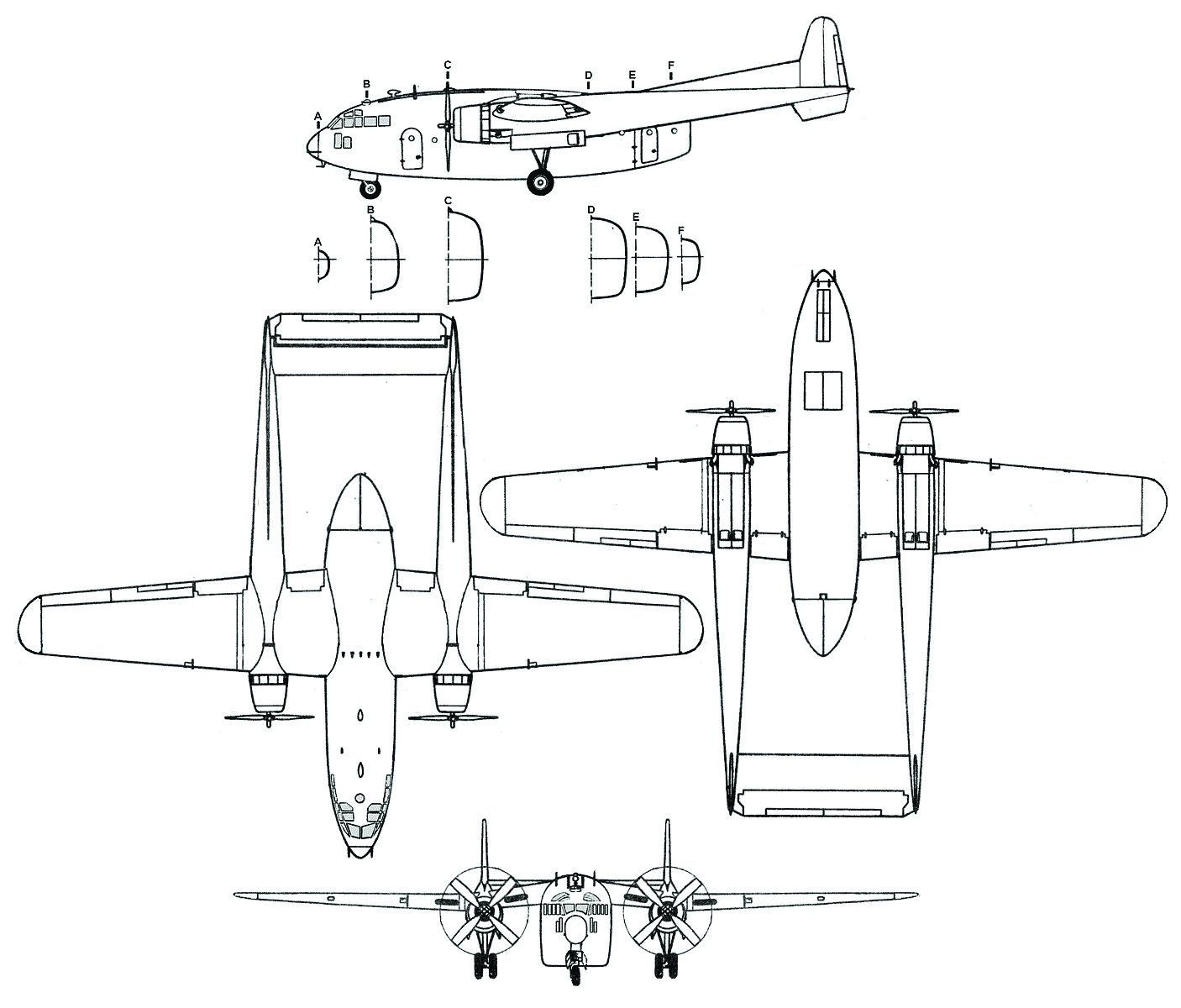First introduced in December 1949, the Fairchild C-119 Flying Boxcar was used as a transport aircraft, carrying cargo, personnel and equipment, as well as making cargo drops as needed.
The C-119 Flying Boxcar was manufactured to carry cargo, military personnel, hospital litter patients and drop troops and supplies by parachute into areas where aircraft could not land. The first prototype took to the air in November 1947 and was designated C-119A. Powered by two Wright R-3350 engines, the aircraft had a flight crew of four which included two pilots, one navigator/radio operator and a loadmaster for cargo or a jumpmaster for deploying troops. The aircraft could carry sixty-two, fully equipped troops or a maximum payload of 20,000 pounds.
The C-119G was a modernized version for the Korean War and had Aeroproducts propellers and R-3350-85 engines. The aircraft made its first flight in October 1952, and its production run turned out four hundred and eighty as the last major production model. Later modifications to the G model produced the AC-119G gunships utilized during the Vietnam War, which featured four, side-firing 7.62-mm miniguns in the fuselage, and the C-119K, which sported auxiliary turbojet engines in addition to more powerful piston engines. The last C-119 rolled off the production line in 1955 after Fairchild had built 1,112.


Serial Number: 22107
Manufacturer: Fairchild Aircraft
Crew: Four
Engines: Two Wright R-3350-85 Cyclone twin-row 18-cylinder radials; 3,400 horsepower each
Wingspan: 109 feet 4 inches
Length: 86 feet 6 inches
Height: 26 feet 3 inches
Weight: 85,000 pounds (loaded)
Speed: 218 mph (maximum)
Range: 1,770 miles
Service Ceiling: 23,900 feet
Armament: None
Cost: $600,000 (approximate)
Hill Air Force Base has had a long association with the C-119. In May 1949, it was assigned the specialized maintenance and supply activity for parts on the aircraft. This task, along with storage of several C-119s, continued through the 1950s. Beginning in 1963, the 733rd Troop Carrier Squadron, a C-119 unit, operated out of Hill Air Force Base. It also had the job of repairing the R4360 engines that were used in the C-119B and C variants.
Restored to represent the State of Utah, once assigned to Hill Air Force Base decades ago, the C-119G located at Hill Aerospace Museum, was manufactured by Fairchild and delivered to the Royal Canadian Air Force (RCAF) in December 1954. Serving various bases throughout Canada for more than 20 years, the aircraft was eventually sold to Frank Shelly of Los Angeles, California, in 1967.
Later sold to the forest fire fighting company, Hawkins and Powers of Greybull, Wyoming, it was eventually acquired by the Aerospace Museum in November 1985.
First introduced in December 1949, the Fairchild C-119 Flying Boxcar was used as a transport aircraft, carrying cargo, personnel and equipment, as well as making cargo drops as needed.
The Boxcar was produced by Fairchild Aircraft.
The C-119 would be replaced by the C-123, also produced by Fairchild.
Of the 1,183 aircraft built, some 60 remain, all on display in museums across the globe.